
Roots
The strands that crown our heads, whether tightly coiled or gently waved, carry whispers of ancient lands and stories passed through generations. Hair, in its purest form, offers a profound connection to identity, a silent language spoken across time and continents. For those with textured hair, this connection runs particularly deep, intertwining with histories of resilience, cultural celebration, and profound economic impact. We begin our exploration at the very foundations, examining the anatomical marvel that is textured hair and the systems developed to understand its many expressions.

Hair Anatomy and Physiology Specific to Textured Hair
The architecture of textured hair distinguishes it from other hair types at a microscopic level, influencing its behavior and needs. Each strand emerges from a follicle, but the shape of this follicle, and the path the hair takes as it grows, define its unique curl pattern. A highly coiled strand typically springs from an oval-shaped follicle, emerging at a sharp angle from the scalp. This creates a hair shaft that is not perfectly round, but rather elliptical, contributing to its characteristic spirals and bends.
The very structure of textured hair also affects its inherent moisture balance. The twists and turns along the hair shaft make it more challenging for natural oils, produced by the scalp’s sebaceous glands, to travel down the entire length of the strand. This anatomical reality often renders textured hair prone to dryness, necessitating specific care routines that prioritize hydration and moisture retention.
The outer layer, the cuticle, with its overlapping scales, may also lift more readily at the points of curvature, further contributing to moisture loss. Understanding these intrinsic qualities is the first step toward cultivating truly healthy hair.
Textured hair’s unique follicle shape and elliptical shaft create distinct curl patterns, influencing its moisture retention and requiring specialized care.

Textured Hair Classification Systems
For centuries, descriptions of textured hair relied on subjective terms, often laden with societal biases. In recent decades, however, efforts have been made to standardize a classification system, providing a common language for individuals and professionals alike. The most widely recognized system categorizes hair into types 1 through 4, with sub-classifications A, B, and C to denote increasing tightness of curl or coil.
- Type 1 ❉ Represents straight hair, lacking any natural curl.
- Type 2 ❉ Denotes wavy hair, ranging from loose waves (2A) to more defined S-patterns (2C).
- Type 3 ❉ Describes curly hair, with loose, buoyant curls (3A) progressing to tighter, springy curls (3C).
- Type 4 ❉ Characterizes coily or kinky hair, spanning from tightly packed S-patterns (4A) to Z-shaped coils that may not visibly curl (4C).
While these classifications offer a helpful starting point, it is worth noting that many individuals possess multiple textures across their scalp. Hair on the crown might exhibit a different curl pattern than hair at the nape or temples. This diversity within a single head of hair underscores the individualized approach necessary for proper care. The journey of understanding one’s hair begins with appreciating its specific type and its unique characteristics.
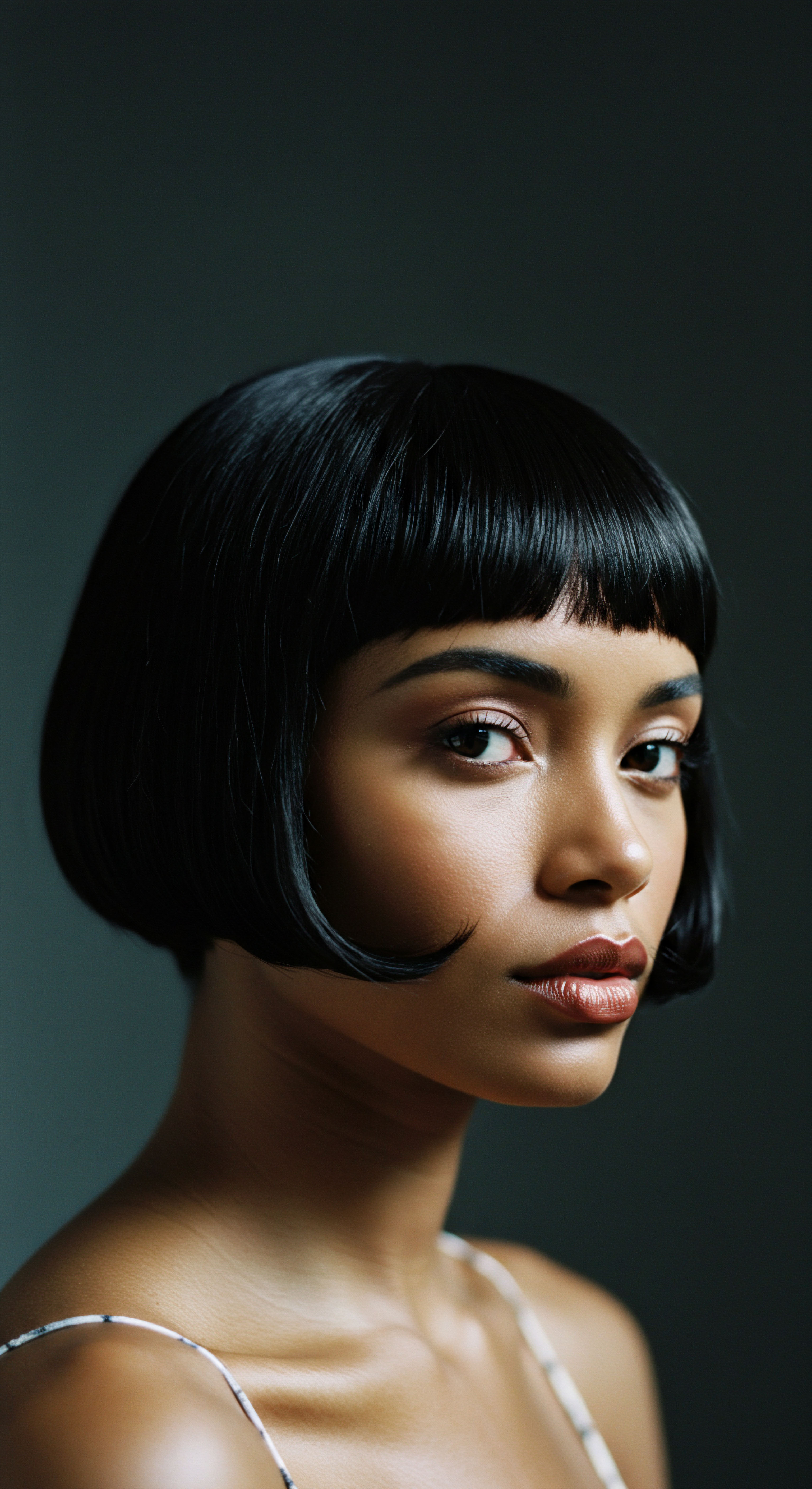
The Essential Lexicon of Textured Hair
Navigating the world of textured hair care and styling benefits greatly from a shared vocabulary. Beyond the numerical classification, a variety of terms describe specific hair characteristics, care practices, and styling techniques. Familiarity with this lexicon empowers individuals to communicate their needs effectively and to seek out products and methods best suited for their hair.
Terms such as Porosity, which refers to the hair’s ability to absorb and hold moisture, play a central role in determining appropriate product choices. Hair with high porosity, for example, absorbs water quickly but loses it just as rapidly, often benefiting from heavier butters and creams. Conversely, low porosity hair resists moisture penetration, requiring lighter products and perhaps steam to aid absorption.
Other terms like Shrinkage, the apparent reduction in length of textured hair when dry compared to its wet, stretched state, are also part of this essential vocabulary. This phenomenon is a natural attribute of coily and curly hair, not a sign of damage, and understanding it helps manage expectations regarding hair length. Acknowledging these characteristics helps in appreciating the hair’s natural qualities rather than perceiving them as challenges.
| Term Co-wash |
| Description Cleansing the hair with conditioner rather than shampoo to preserve moisture. |
| Term Protective Style |
| Description Hairstyles that tuck away hair ends, minimizing manipulation and exposure to environmental stressors. |
| Term Leave-in Conditioner |
| Description A conditioning product applied after washing and left in the hair to provide ongoing moisture and detangling. |
| Term Pre-poo |
| Description An oil or treatment applied to hair before shampooing to protect it from harsh cleansing. |
| Term These terms form a foundational understanding for effective textured hair care. |

Hair Growth Cycles and Influencing Factors
Hair growth follows a cyclical pattern, moving through distinct phases ❉ anagen (growth), catagen (transition), and telogen (resting). While these cycles are universal, various factors can influence the health and vitality of textured hair during each phase. Genetics certainly play a primary role in determining hair density, texture, and growth rate. However, external and internal elements also significantly impact hair health.
Nutrition stands as a pillar of hair health. A balanced diet rich in vitamins, minerals, and proteins provides the building blocks for strong hair strands. Deficiencies in certain nutrients, such as iron, zinc, or biotin, can lead to slowed growth or even hair thinning. Similarly, proper hydration from within supports the hair’s moisture levels, working in concert with external moisturizing practices.
Environmental stressors, including harsh weather conditions, pollution, and mechanical damage from styling, can also affect hair growth and retention. Heat styling, if not approached with caution, can compromise the hair’s structural integrity, leading to breakage. Understanding these influencing factors empowers individuals to support their hair’s natural growth cycle, fostering length retention and overall vitality.

Ritual
Stepping from the foundational understanding of textured hair, we now turn our attention to the daily and periodic practices that breathe life into its natural beauty. The deliberate choices made in styling and care represent more than mere routine; they are acts of gentle guidance, shaping our experience with these unique strands. This section explores the vast world of styling possibilities, from techniques that shield and preserve to those that define and celebrate, alongside the specific tools that bring these visions to fruition.
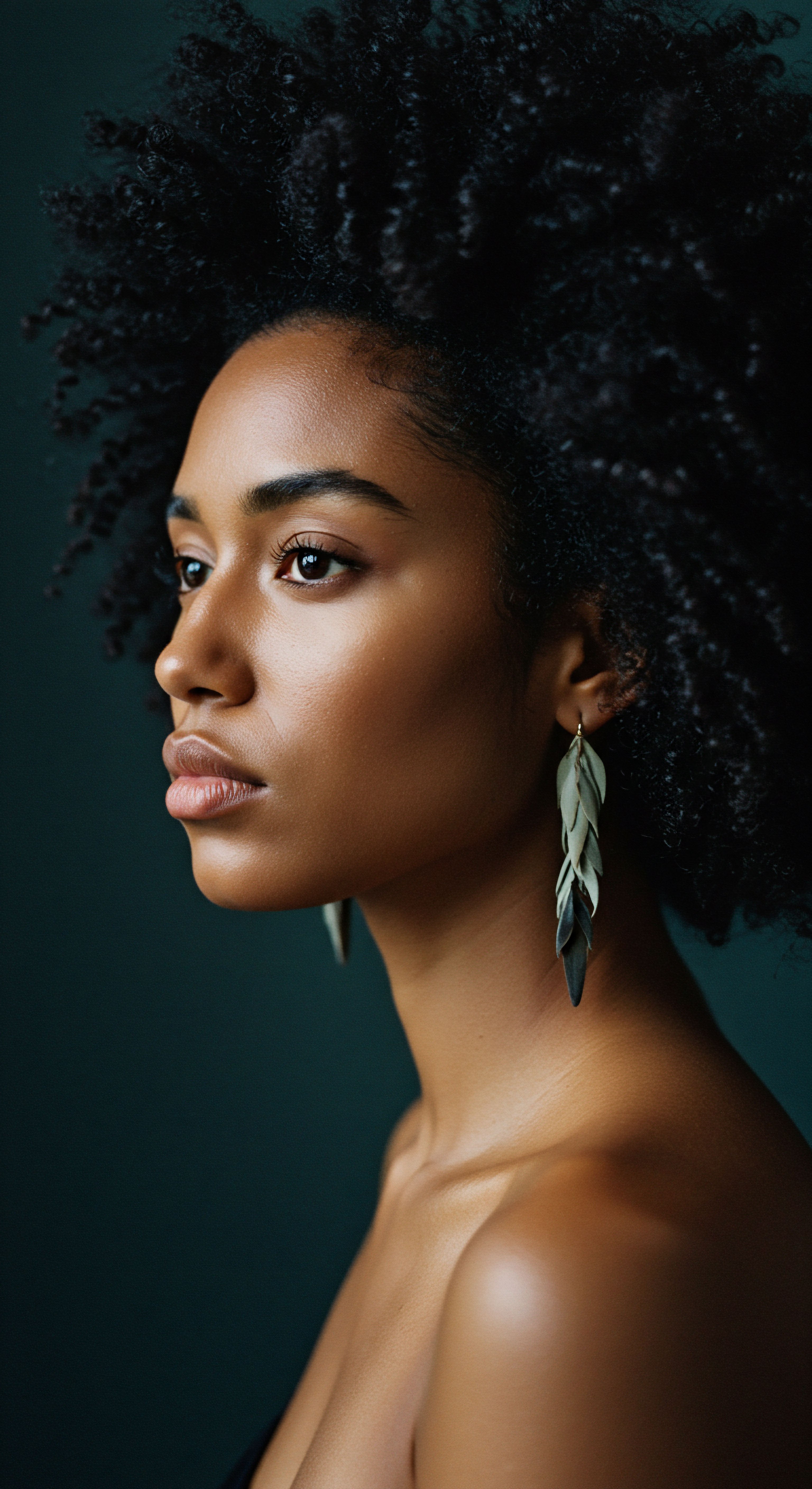
Protective Styling Encyclopedia
Protective styles serve as a sanctuary for textured hair, offering a respite from daily manipulation and environmental exposure. These styles, which tuck away the hair’s delicate ends, help minimize breakage and encourage length retention. The concept is ancient, with roots in various African cultures where intricate braided and coiled styles served both aesthetic and practical purposes, shielding hair from harsh climates and signifying social standing.
A diverse range of options exists within protective styling, each offering unique benefits and aesthetic appeal. Braids, whether box braids, cornrows, or knotless variations, remain a cornerstone, allowing for creative expression while safeguarding the hair. Twists, including two-strand twists and flat twists, offer a softer alternative, providing similar protection with a different visual texture. Even simpler styles, such as buns or ponytails, when executed with care and proper tension, can serve a protective function.
The longevity of a protective style varies, but the underlying principle remains constant ❉ reducing stress on the hair. Regular cleansing of the scalp and light moisturizing of the hair within the style are crucial to maintaining hair health during these periods. This approach helps to avoid product buildup and keeps the hair hydrated, allowing it to flourish beneath the protective embrace.
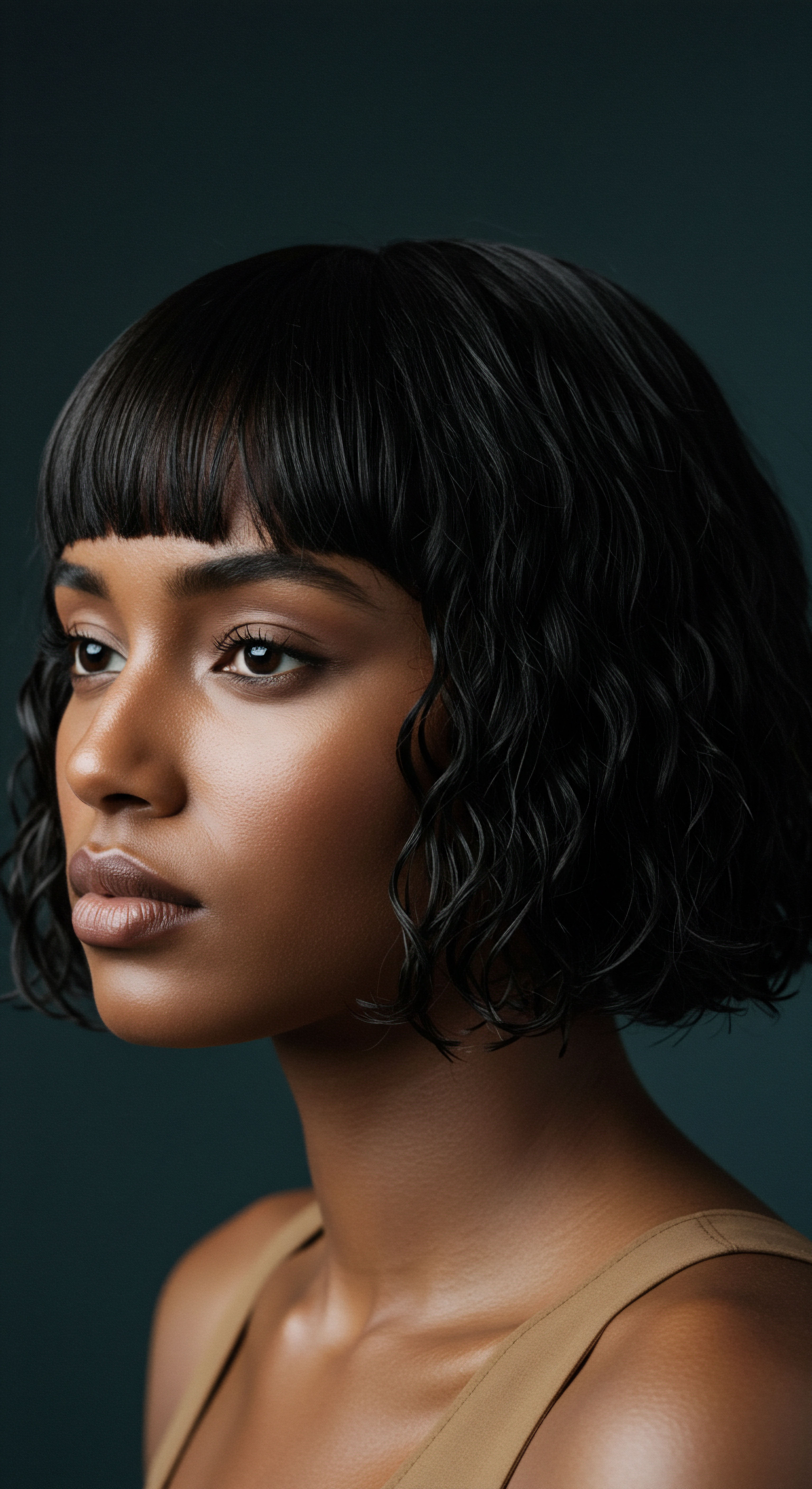
Natural Styling and Definition Techniques
Beyond protective measures, the realm of natural styling centers on celebrating and enhancing the hair’s inherent curl or coil pattern. These techniques aim to define, moisturize, and allow the hair to exist in its most authentic state, embracing its natural volume and shape. The journey to mastering natural styling often involves experimentation and a deep understanding of one’s specific hair texture and porosity.
The Wash and Go technique, for instance, involves cleansing, conditioning, and then applying styling products to wet hair to encourage curl clumping and definition as it dries. This method highlights the hair’s natural pattern with minimal manipulation. For those seeking more controlled definition, techniques like Finger Coiling or Shingling involve manually shaping individual sections of hair around a finger or using a comb to create distinct curls.
Another popular method is the Twist-Out or Braid-Out, where hair is twisted or braided while damp, allowed to dry, and then carefully unraveled to reveal a defined, stretched curl pattern. These techniques offer versatility, allowing for variations in definition and volume. The selection of products, from curl creams to gels, plays a significant role in the success of these styles, providing hold and moisture without stiffness or flaking.
Natural styling techniques celebrate the hair’s inherent curl, defining its pattern through methods like wash and go, finger coiling, or twist-outs.
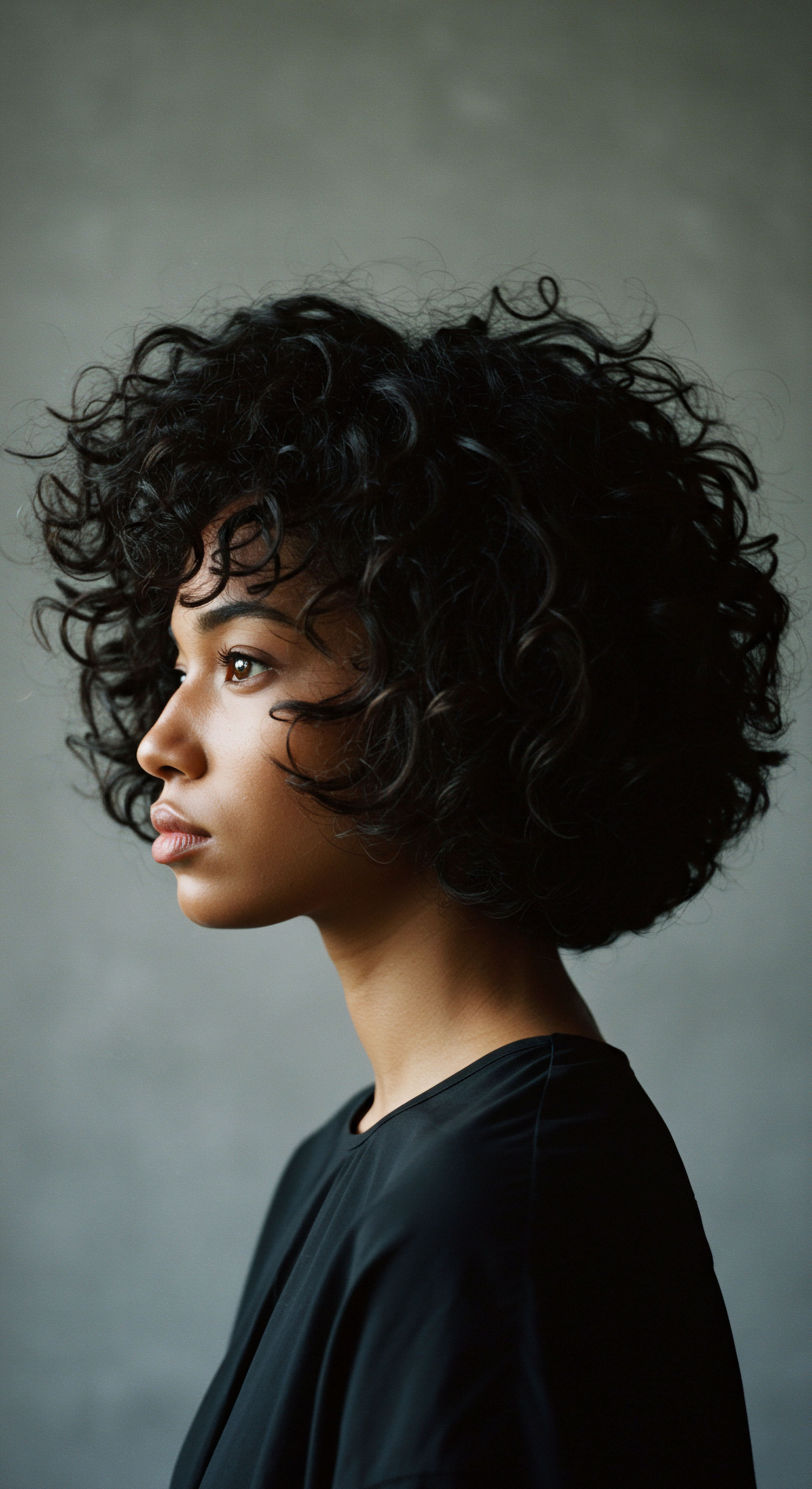
Wigs and Hair Extensions Mastery
Wigs and hair extensions hold a multifaceted place in the textured hair community, serving purposes ranging from fashion and self-expression to protective styling and hair transitions. Their use dates back centuries, providing versatility and the ability to transform one’s look without altering natural hair.
Modern advancements in wig and extension technology offer a wide array of textures, colors, and lengths, allowing for seamless integration with natural hair. Wigs, whether full lace, frontal, or U-part, provide a complete change of style while giving natural hair a break from manipulation. They are particularly beneficial for individuals transitioning from chemically straightened hair or those seeking a temporary alteration.
Hair Extensions, including sew-ins, clip-ins, and tape-ins, add length, volume, or both. For textured hair, choosing extensions that closely match one’s natural curl pattern is crucial for a cohesive appearance. The proper installation and removal of extensions are paramount to prevent tension and damage to the natural hair. Understanding the different types and their applications empowers individuals to make informed choices that align with their hair goals and lifestyle.
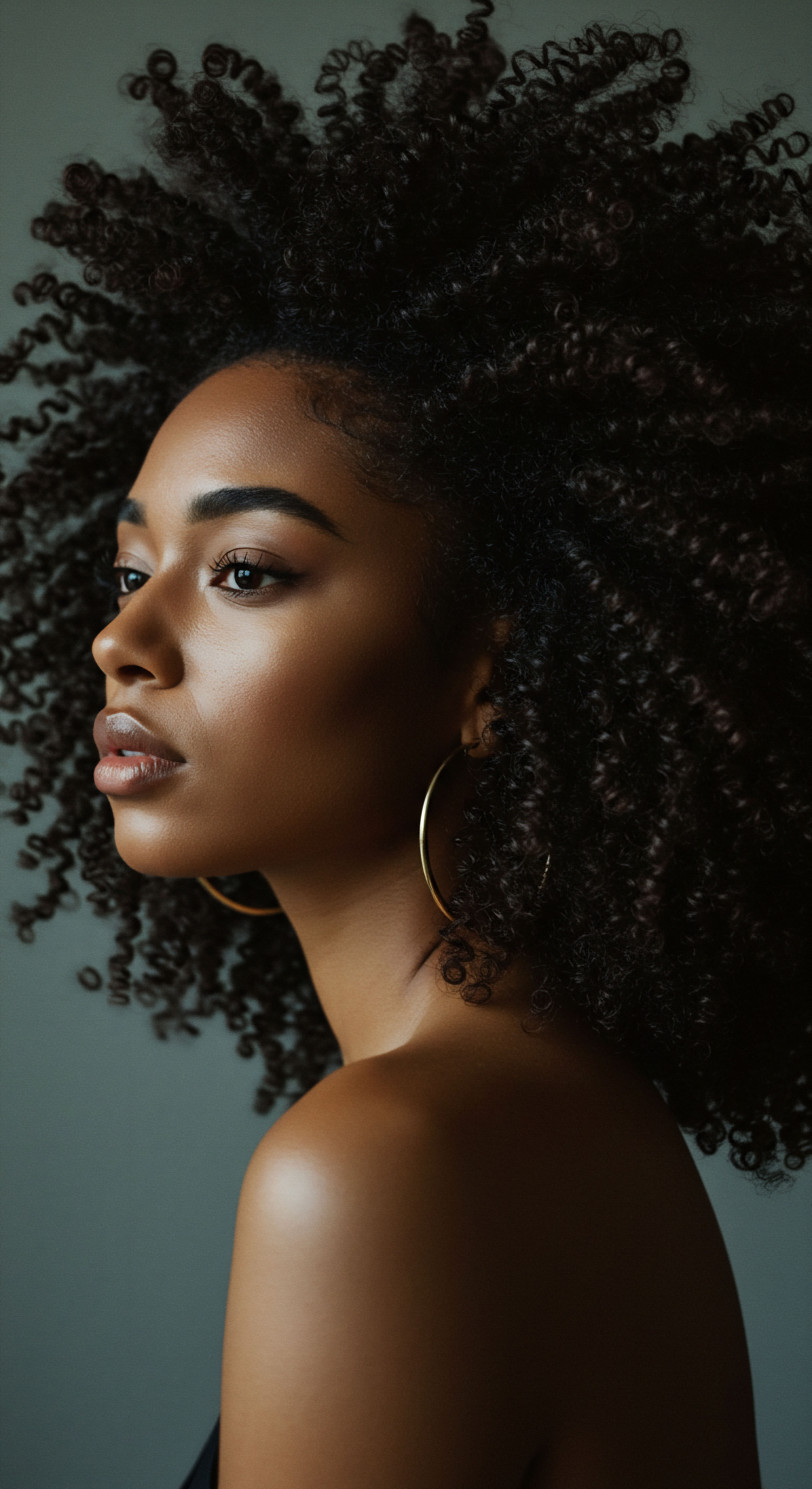
Heat Styling and Thermal Reconditioning A Safety-First Approach
While celebrating natural texture remains a core principle, heat styling and thermal reconditioning also hold a place in the textured hair repertoire, offering temporary alterations for different looks. This approach demands a rigorous commitment to safety to prevent heat damage, which can permanently alter the hair’s natural curl pattern.
Techniques such as Blow-Drying, Flat-Ironing, and Curling with Wands or irons can smooth or reshape textured hair. The key to minimizing damage lies in using heat protectants, applying the lowest effective temperature, and limiting the frequency of heat application. Heat protectants create a barrier between the hair and the heat source, reducing moisture loss and protein denaturation.
Thermal Reconditioning, often referred to as Japanese straightening, is a chemical process that permanently alters the hair’s protein bonds to achieve a straight texture. This is a significant chemical treatment that requires professional application and careful consideration due to its irreversible nature and potential for damage if not performed correctly. A comprehensive understanding of the science behind heat’s effect on hair, alongside diligent protective measures, is essential for anyone choosing these styling paths.

The Complete Textured Hair Toolkit
A well-equipped toolkit is essential for nurturing and styling textured hair, enabling gentle manipulation and effective product application. The right tools respect the hair’s delicate nature, minimizing breakage and enhancing its natural beauty.
- Wide-Tooth Comb ❉ Ideal for detangling wet or damp hair, preventing breakage.
- Denman Brush or Similar Detangling Brush ❉ Aids in defining curls and smoothing strands.
- Spray Bottle ❉ Essential for re-wetting hair during styling or for refreshing curls.
- Microfiber Towel or Old T-Shirt ❉ Dries hair gently, reducing frizz compared to traditional terrycloth towels.
- Satin or Silk Scarf/bonnet ❉ Protects hair at night, minimizing friction and moisture loss.
- Hair Clips and Ties ❉ For sectioning hair during styling and securing styles without causing tension.
Beyond these basics, specialized tools like diffusers for blow dryers can enhance curl definition, and various types of rollers (flexi-rods, perm rods) can create heatless curls. Investing in quality tools designed for textured hair represents a commitment to its health and longevity, making the styling process more efficient and enjoyable.

Relay
As we delve deeper, the question of textured hair’s significance expands beyond its physical characteristics and daily care, reaching into the profound historical currents and economic forces that have shaped societies. How has something as personal as hair become a battleground for identity, a marker of status, and a driver of commerce? This section explores the intricate interplay of biology, social perception, and market dynamics that position textured hair as a powerful cultural and economic phenomenon.

Ancient Roots and Social Hierarchies
Before the transatlantic slave trade profoundly altered perceptions, textured hair in pre-colonial African societies was a vibrant medium of communication and status. Hairstyles conveyed a wealth of information about an individual ❉ their age, marital status, tribal affiliation, social standing, wealth, and even religious beliefs. Complex braids, intricate patterns, and the adornment of hair with beads, shells, and clay were not mere aesthetic choices; they were living expressions of cultural identity and communal bonds. For instance, among the Yoruba, hair was considered the most elevated part of the body, a channel for spiritual interaction, and braided styles could convey messages to deities.
The care and styling of hair were often communal activities, particularly among women, serving as cherished opportunities for socialization and the transmission of cultural knowledge across generations. This rich tradition underscores hair’s role as a symbol of pride, health, and social connection. Hair groomers held esteemed positions, possessing skills that upheld community standards and contributed to the social fabric.
In pre-colonial Africa, textured hairstyles were intricate symbols of identity, status, and spirituality, serving as a vibrant form of social communication.

The Weight of Enslavement and Forced Assimilation
The arrival of the transatlantic slave trade marked a brutal disruption of this rich heritage. One of the first dehumanizing acts inflicted upon enslaved Africans was the forced shaving of their heads. This act aimed to strip them of their identity, sever their connection to their ancestral lands, and erase the profound cultural significance of their hairstyles.
Removed from their homelands, enslaved individuals lost access to traditional tools, oils, and the communal time for hair care. Their hair often became matted and tangled, frequently hidden beneath scarves or kerchiefs.
A devastating hierarchy emerged, wherein lighter skin and straighter hair, often associated with European features, granted enslaved individuals preferential treatment, such as work in plantation houses with less physically demanding labor. This insidious system introduced the concept of Texturism, a form of discrimination within the Black community where straighter hair translated to perceived social and economic advantage. This forced assimilation continued post-emancipation, with many Black individuals using hot combs, flat irons, and chemical relaxers to conform to Eurocentric beauty standards, believing it essential for social acceptance and economic opportunity.

Resistance, Reclamation, and the Natural Hair Movement
Despite centuries of oppression, textured hair remained a powerful symbol of resistance and cultural pride. Enslaved people ingeniously used their hair as a tool for survival, braiding seeds and grains into their styles as a means of protest and to ensure sustenance. The 1960s and 1970s witnessed a profound shift with the Civil Rights Movement and the Black Power Movement, sparking a revival of pride in African heritage.
The Afro, in particular, became a potent symbol of Black identity, challenging dominant beauty norms and asserting self-acceptance. Figures like Angela Davis and Huey Newton wore their natural hair as a political statement, rejecting societal pressures to alter their appearance.
This spirit of resistance evolved into the modern Natural Hair Movement, which encourages individuals to embrace their natural textures and reject harmful chemical treatments. Styles like Afros, cornrows, and locs have become powerful expressions of cultural heritage and self-love. This movement is not merely a trend; it is a cultural awakening, reshaping beauty standards and promoting inclusivity.
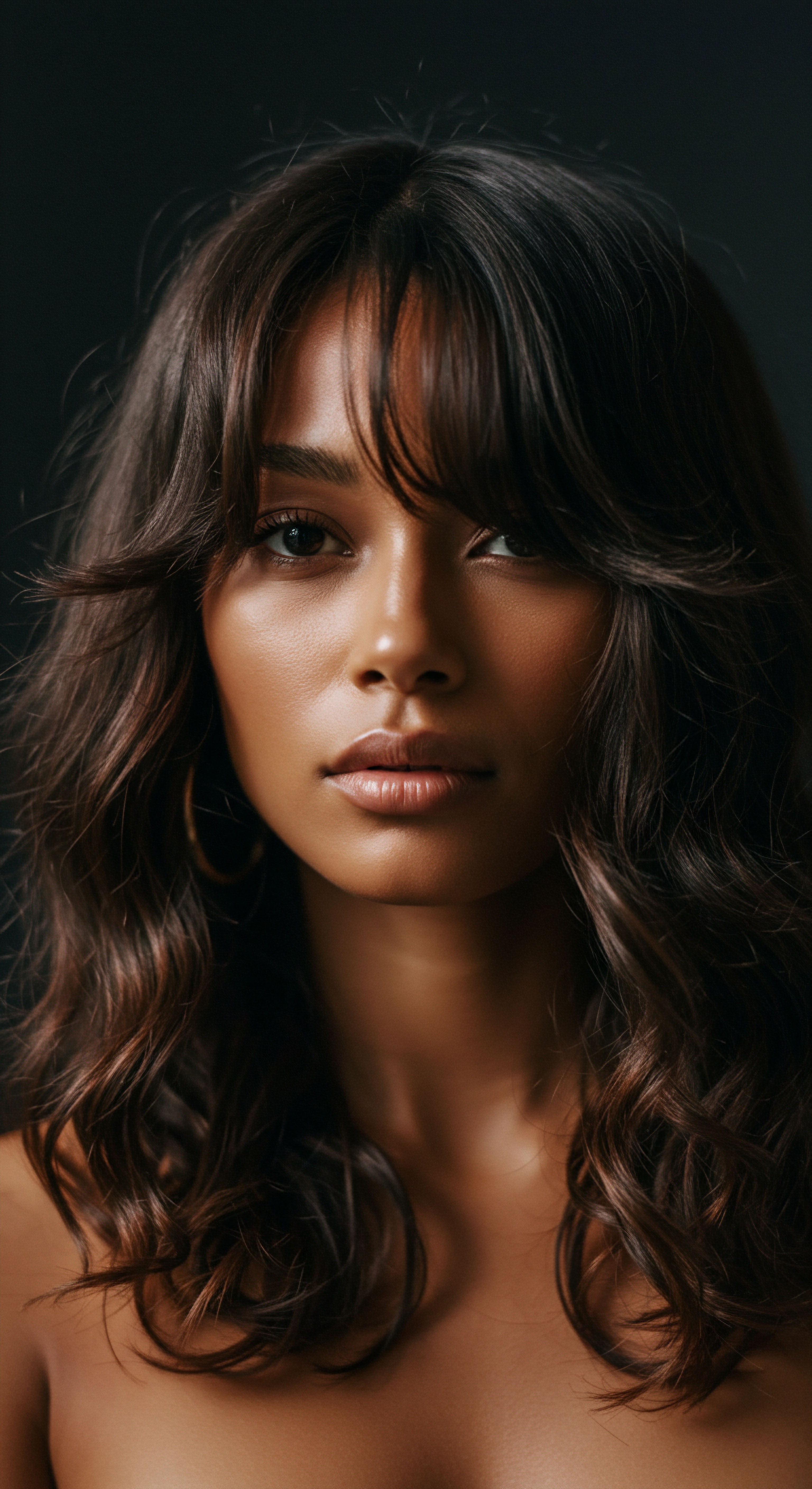
How Does Hair Discrimination Affect Economic Advancement?
The societal implications of hair discrimination extend directly into economic spheres, impacting employment opportunities and career progression for individuals with textured hair. Despite growing awareness and movements towards natural hair acceptance, studies reveal a persistent bias. According to a 2023 research study co-commissioned by Dove and LinkedIn, Black women’s hair is 2.5 Times as Likely as White Women’s Hair to Be Perceived as “unprofessional.” This perception translates into tangible economic barriers.
The same study found that approximately two-thirds (66%) of Black women change their hair for a job interview, with 41% specifically altering their hair from curly to straight. Furthermore, over 20% of Black women aged 25-34 have been sent home from their jobs due to their hair. These discriminatory actions can culminate in termination or hinder advancement to higher positions, affecting Black and brown workers across various fields. The CROWN Act (Creating a Respectful Open World for Natural Hair), enacted in several U.S.
states, seeks to prohibit race-based hair discrimination in workplaces and schools, recognizing hair as a protected characteristic. Its passage signals a legislative effort to dismantle these economic barriers and ensure equitable opportunities.
| Aspect of Discrimination Perceived Unprofessionalism |
| Statistical Impact Black women's hair 2.5x more likely to be seen as unprofessional than white women's hair. |
| Aspect of Discrimination Job Interview Hair Changes |
| Statistical Impact 66% of Black women change their hair for job interviews; 41% straighten it. |
| Aspect of Discrimination Sent Home from Work |
| Statistical Impact Over 20% of Black women aged 25-34 have been sent home due to their hair. |
| Aspect of Discrimination Denied Job Interview |
| Statistical Impact 25% of Black women believe they have been denied a job interview due to their hair. |
| Aspect of Discrimination These figures highlight the persistent economic disadvantages faced by Black women due to hair bias. |
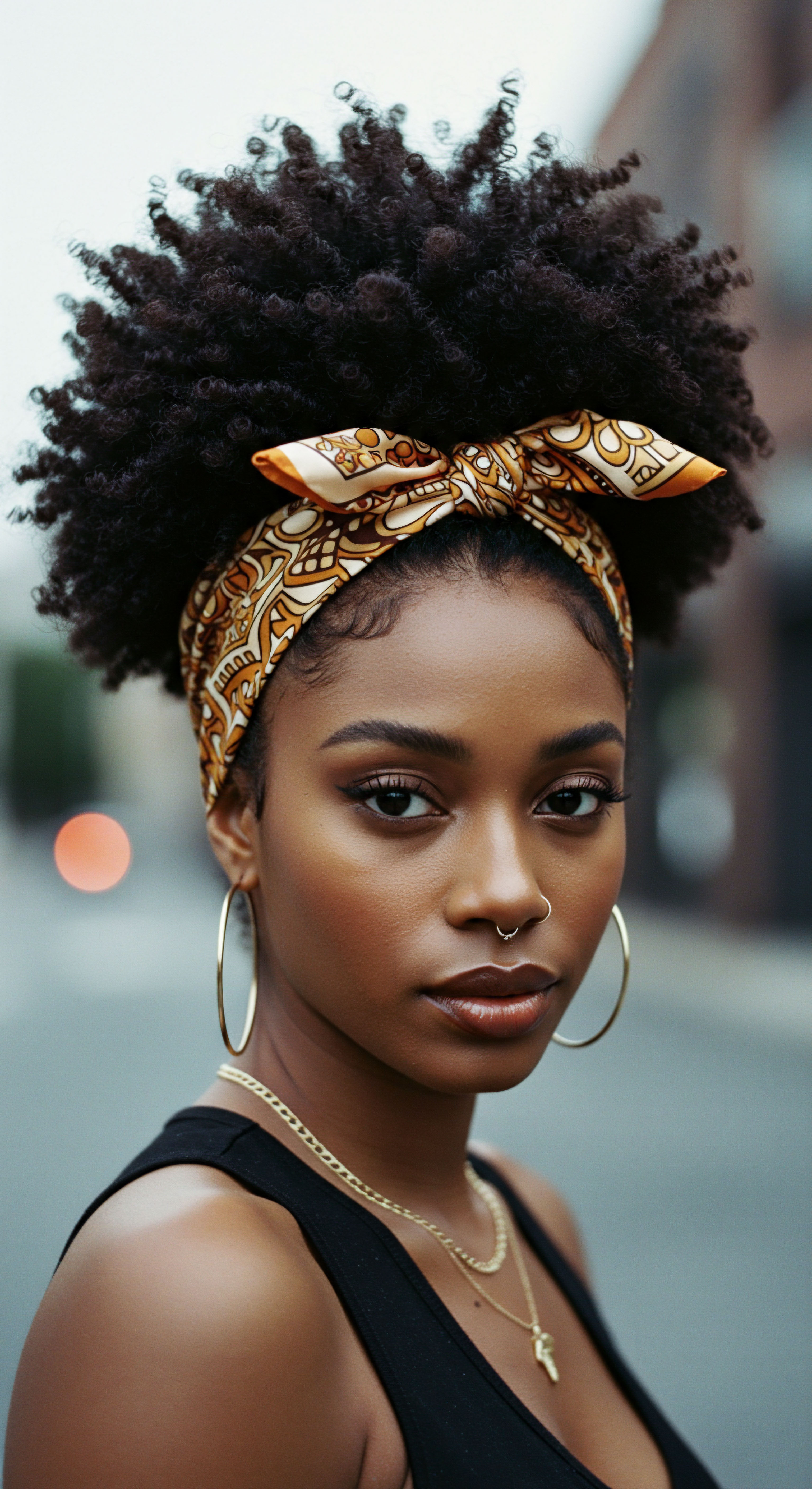
The Economic Power of the Textured Hair Industry
Paradoxically, the historical challenges faced by textured hair have also spurred the development of a powerful and resilient industry. Black women, often underserved by mainstream beauty companies, became pioneers in creating products and services tailored to their unique hair needs. Madam C.J.
Walker, a Black woman, stands as a monumental figure, becoming one of America’s first self-made female millionaires in the early 1900s through her hair care products. Her business not only created wealth for herself but also provided economic independence for thousands of other Black women who sold her products and styled hair, offering a pathway away from exploitative labor.
Today, the textured hair care market continues to represent a significant economic force. The global Black hair care market was estimated at USD 3.2 billion in 2023 and is projected to reach approximately USD 4.9 billion by 2033, showing a compound annual growth rate of 4.3%. Black consumers are a dominant force, spending significantly more on hair care than other demographics. For example, Black women spend approximately six times more on hair care than other ethnic groups.
This market supports a wide ecosystem of businesses, from small, independent artisans crafting specialized products to salons providing dedicated services for natural hair. The rise of loc and dreadlock entrepreneurs, for example, has created a thriving sector within the economy, stimulating job creation and the development of new products. This growth is not merely a market trend; it signifies a cultural shift where self-acceptance drives economic change, providing an avenue for communities to support and invest within their own networks.
- Black-Owned Businesses ❉ The natural hair movement has led to a rise in Black-owned businesses specializing in products and services for textured hair, fostering economic empowerment within the community.
- Job Creation ❉ The industry’s growth creates jobs for stylists, product developers, marketers, and retailers, contributing to overall economic activity.
- Consumer Spending Power ❉ Black consumers, particularly Black women, wield substantial purchasing power within the beauty market, driving demand for tailored solutions.
The economic narrative of textured hair is one of enduring strength, born from necessity and cultivated through community. It stands as a testament to the power of collective demand and entrepreneurial spirit in shaping a market that not only caters to specific needs but also reinforces cultural identity and economic self-determination.

Reflection
The journey through the historical and economic landscape of textured hair reveals a story far richer and more intricate than mere aesthetics. It is a profound exploration of identity, resilience, and the enduring human spirit. From ancient African civilizations where hair communicated status and spirituality, to the brutal dehumanization of the transatlantic slave trade, and then to the powerful reclamation movements of today, textured hair has consistently stood as a symbol. Its narrative is one of adaptation, resistance, and ultimately, a joyful celebration of authentic selfhood.
The economic dimensions of this story, from the pioneering entrepreneurs who built empires out of necessity to the multi-billion dollar industry thriving today, underscore a compelling truth ❉ cultural pride can indeed drive significant economic change. The very coils and curls that were once targets of discrimination now represent a vibrant marketplace, a testament to beauty, innovation, and unwavering community support. As we look ahead, the evolving understanding and acceptance of textured hair promise a future where its significance is universally acknowledged, not just for its beauty, but for the powerful history and economic force it represents.
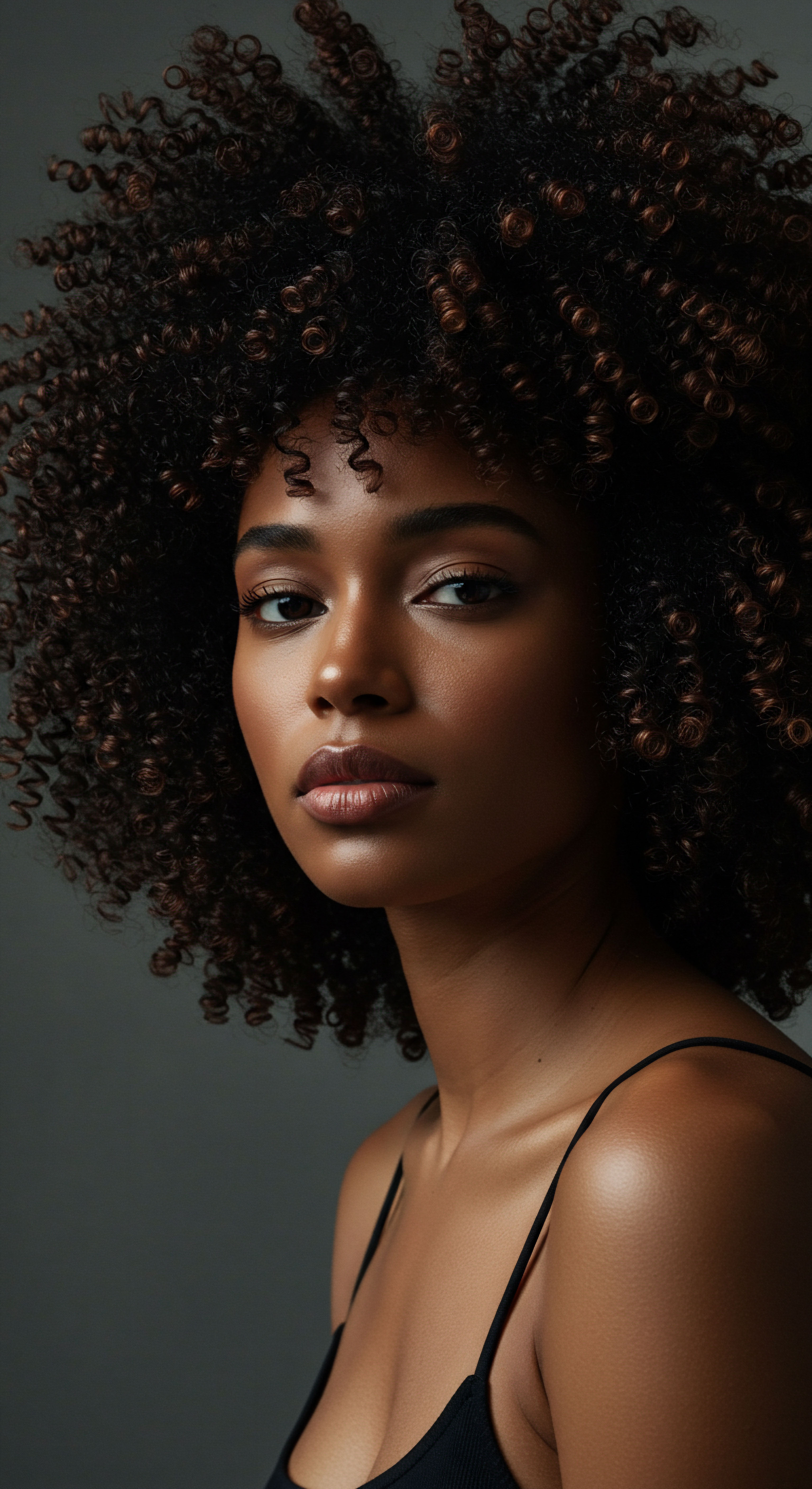
References
- Byrd, Ayana D. and Lori L. Tharps. Hair Story ❉ Untangling the Roots of Black Hair in America. St. Martin’s Press, 2001.
- Carney, Judith A. Black Rice ❉ The African Origins of Rice Cultivation in the Americas. Harvard University Press, 2001.
- Duke, Ashleigh. “The Impact of Hair Texture on Perceptions of Professionalism and Competence.” Journal of Applied Social Psychology, 2020.
- Gill, Tiffany M. Beauty Shop Politics ❉ African American Women’s Activism in the Beauty Industry. University of Illinois Press, 2010.
- Mbilishaka, Afiya, et al. “The CROWN Act ❉ A Research Study on Hair Discrimination in the Workplace.” Dove and LinkedIn, 2023.
- Murrow, Willie L. 400 Years Without A Comb ❉ The Black Hair Story. Self-published, 1973.
- Tharps, Lori L. Hair Story ❉ Untangling the Roots of Black Hair in America. St. Martin’s Press, 2001.
- Webster, Pamela, and Driskell, R. The Hair and Skin Color Preference of African Americans. 1983.